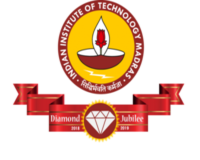- Home
- Publications
RESEARCH PUBLICATIONS
- Generalized Information Processing using Entangled States with Odd Number of Particles; Atul Kumar and M. S. Krishnan (Submitted)
- Statistical Correlations and Information Processing; Atul Kumar and M. S. Krishnan (Submitted).
- Generalized Controlled dense coding with Maximally Entangled Multiqubit States; Atul Kumar and M. S. Krishnan, International journal of quantum information (Accepted)
- Quantum Entanglement and teleportation using statistical correlations; Atul Kumar and M. S. Krishnan, J. Chem. Sci. V.121, 1-9 (2009)
- Mohamad Akbar Ali and M. S. Krishnan, Computational studies on cyclic [n]paraphenyleneacetylenes using homodesmotic reaction; Molec. Phys. (Print)
- B. C. Sanctuary, M. S. Krishnan, S. Presse and W. Chen, Quantum teleportation using local correlations; (Submitted to Foundations of Physics).
- Manoj Kumar Pandey and M. S. Krishnan, Effective Floquet Hamiltonian for spin I=1 in magic angle spinning NMR using contact transformation; J. Chem. Sci., V. 119, 417-422 (2007).
- Ram Prasad, Mangala Sunder Krishnan and E. Arunan, Rotational spectra of mono-substituted asymmetric C6H6-H2O dimers; J. Mol. Spectrosc. 232p.296-302 pp(2005).
- S. Karthikeyan, Mangala Sunder Krishnan and Tucker Carrington, Jr. Calculating intensities using effective Hamiltonians in terms of Coriolis-adapted normal modes; J. Chem. Phys. 122, 0341606: pages-8, (2005).
- R. Ramesh and M. S. Krishnan, Effective Hamiltonians in Floquet theory of magic angle spinning using van Vleck transformation; J. Chem. Phys. 114, 5967 (2001).
- M. S. Krishnan, ‘Theoretical rotational – vibrational Spectroscopy; An introduction”, edited by T. Pradeep, {Advances in Physical Chemistry}, Allied Publishers, 1999.
- M. S. Krishnan and T. Carrington,. Uncoupled effective Hamiltonians for molecules with several vibrational modes coupled by Coriolis and centrifugal terms; Chem. Phys. 219, 31 (1997).
- D. J. Isbister, M. S. Krishnan and B. C. Sanctuary, Use of computer algebra for the study of quadrupole spin systems; Molec. Phys. 86,1517 (1995).
- B. C. Sanctuary and M. S. Krishnan, Theory of NQR pulses; Z. Naturforsch. 49a, 71 (1994).
- M. S. Krishnan and T. Carrington, Jr. Effective Hamiltonians for Coriolis- Coupled nearly degenerate modes: Illustrative examples; J. Chem. Phys. 99, 7529 (1993).
- F. P. Temme, C. E. J. Mitchell, and M. S. Krishnan, Distinctive combinatorial aspects of NMR spin invariance for icosahedral exo-cage spin cluster problems; Molec. Phys. 79, 953 (1993).
- M. S. Krishnan, F. P. Temme and B. C. Santuary, Theory of pulses in nuclear quadrupole resonance spectroscopy; I. Physical picture, Molec. Phys. 78, 1385 (1993).
- M. S. Krishnan and T. Carrington, Jr. Isolated effective Hamiltonians for Two nearly Degenerate Modes Coupled by Coriolis and Centrifugal Terms; J. Chem. Phys. 98, 83 (1993).
- M. S. Krishnan and T. Carrington, Jr. A simplified transformation of the rotational-vibrational Hamiltonian to eliminate a Coriolis term and perturbation theory for higher order terms; J. Chem. Phys. 95, 1884 (1991).
- M. S. Krishnan and T. Carrington, Jr. Quantum canonical transformation of the rotational-vibrational Hamiltonian to remove a Coriolis term; J. Chem. Phys. 94, 461 (1991).
- M. S. Krishnan and R. F. Snider, Half-Bound States in Equilibrium: A separable potential estimate; J. Chem. Phys. 92, 2559 (1990).
- B. C. Sanctuary, N. Lee, F. Commodari, G. Campolieti, M. S. Krishnan and M. Lam, Operator space quantum numbers for spin systems; J. Magn. Reson. 84, 323 (1989).
- M. S. Krishnan, N. Lee, B. C. Sanctuary and T. K. Halstead, Theory of three pulse sequences for systems of single Spins of I=5/2; J. Magn. Reson. 80, 214 (1988).
- M. S. Krishnan and B. C. Sanctuary, Evolution of spin density matrix in pure NQR; Z. Naturforsch. 42a, 907 (1987).
- B. C. Sanctuary, and M. S. Krishnan, Principal axis and rotating frame transformations in multipole NMR; J. Magn. Reson. 69,210 (1986).
- M. S. Krishnan, B. C. Sanctuary, A spherical tensor method for pure NQR; Z. Naturforsch. 41a, 353 (1986).

